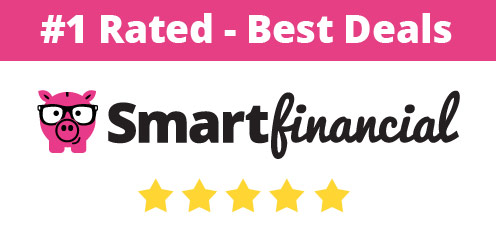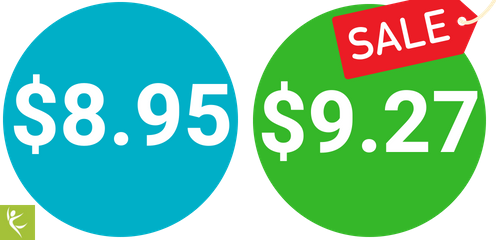Medicaid was once a safety net program only available to the poorest Americans. Now, millions of lower-middle-class Americans have access to Medicaid after the Affordable Care Act expanded the program.
Without Medicaid expansion, millions of Americans wouldn’t have an affordable health insurance option. Medicaid covers more than 72 million Americans. That includes more than 15 million people who have coverage thanks to Medicaid expansion.
On this page, we’ll talk about who’s eligible, the differences between traditional Medicaid and Medicaid managed care, the differences between Medicaid and Medicare, the costs of Medicaid, how you sign up and alternatives to Medicaid.
What is Medicaid and what are its benefits?
Who qualifies for Medicaid?
How do you sign up for Medicaid?
How much does Medicaid cost?
What are alternatives to Medicaid?
What’s the difference between Medicaid managed care and traditional Medicaid?
What’s the difference between Medicaid and Medicare?
Why should you sign up for Medicaid?
What is Medicaid and what are its benefits?
Medicaid is a federal-state health insurance program that covers Americans based on income. Other factors include household size, disability and other factors, such as pregnancy. Medicaid provides either no cost or low-cost coverage for low-income families, children, and pregnant women.
Eligibility varies by state. Some states combine Medicaid with the Children’s Health Insurance Program (CHIP). CHIP covers more than eight million children.
The federal government pays for the vast majority of Medicaid costs. The states fund the rest and run the programs. Each state decides on how to administer the program, eligibility standards, services and rates.
Medicaid provides health insurance coverage similar to employer-sponsored health insurance plans. Medicaid offers plans with hospitalization, outpatient, physician services, maternity, and prescription drug coverage.
Medicaid is called by various names depending on the state. That can make things confusing. For instance, California calls it Medi-Cal. Massachusetts refers to it as MassHealth. Other states call it simply Medicaid.
That can get confusing. We can straighten that out. In the tool below, you can find out the name of your state’s Medicaid program and how to find out if you’re eligible and where to sign up.
Who qualifies for Medicaid?
Each state decides on Medicaid’s income qualifies. Generally, pregnant women and children have more liberal income requirements than a single person with no disabilities.
For instance, some states may allow single, non-disabled people with incomes up to 138% of the federal poverty level (FPL) to sign up. That same state may allow pregnant women and children at 200% or more of the federal poverty level to enroll.
If you’re not sure whether you’re eligible for Medicaid, it wouldn’t hurt to apply. Your state may qualify you if you have children, have a disability, or are pregnant.
Medicaid expansion
Thirty-eight states expanded Medicaid. The ACA let states expand the program so people up to 138% of the FPL can get Medicaid. Medicaid is available in expansion states for non-disabled, single people who make $17,609 or less. A family of four’s limit is $36,156.
Fourteen states haven’t expanded the program yet, including Florida and Texas. So, those income requirements are stricter.
Here’s a look the eligibility ceilings of the FPL for each state for three categories.
| State | Non-disabled adults | Pregnant women | Parents |
|---|---|---|---|
| Alabama | 0% | 146% | 18% |
| Alaska | 138% | 205% | 139% |
| Arizona | 138% | 161% | 138% |
| Arkansas | 138% | 214% | 138% |
| California | 138% | 322% | 138% |
| Colorado | 138% | 265% | 138% |
| Connecticut | 138% | 263% | 138% |
| Delaware | 138% | 217% | 138% |
| District of Columbia | 215% | 324% | 221% |
| Florida | 0% | 196% | 33% |
| Georgia | 0% | 225% | 36% |
| Hawaii | 138% | 196% | 138% |
| Idaho | 0% | 138% | 26% |
| Illinois | 138% | 213% | 138% |
| Indiana | 139% | 218% | 139% |
| Iowa | 138% | 380% | 138% |
| Kansas | 0% | 171% | 38% |
| Kentucky | 138% | 200% | 138% |
| Louisiana | 138% | 214% | 138% |
| Maine | 138% | 214% | 138% |
| Maryland | 138% | 264% | 138% |
| Massaachusetts | 138% | 205% | 138% |
| Michigan | 138% | 200% | 138% |
| Minnesota | 138% | 283% | 138% |
| Mississippi | 0% | 199% | 27% |
| Missouri | 0% | 305% | 22% |
| Montana | 138% | 162% | 138% |
| Nebraska | 0% | 202% | 63% |
| Nevada | 138% | 165% | 138% |
| New Hampshire | 138% | 201% | 138% |
| New Jersey | 138% | 205% | 138% |
| New Mexico | 138% | 255% | 138% |
| New York | 138% | 223% | 138% |
| North Carolina | 0% | 201% | 43% |
| North Dakota | 138% | 152% | 138% |
| Ohio | 138% | 205% | 138% |
| Oklahoma | 0% | 210% | 43% |
| Oregon | 138% | 190% | 138% |
| Pennsylvania | 138% | 220% | 138% |
| Rhode Island | 138% | 258% | 138% |
| South Carolina | 0% | 199% | 67% |
| South Dakota | 0% | 138% | 50% |
| Tennessee | 0% | 250% | 98% |
| Texas | 0% | 207% | 18% |
| Utah | 0% | 144% | 60% |
| Vermont | 138% | 213% | 138% |
| Virginia | 138% | 205% | 138% |
| Washington | 138% | 198% | 138% |
| West Virginia | 138% | 163% | 138% |
| Wisconsin | 100% | 306% | 100% |
| Wyoming | 0% | 159% | 55% |
Source: Kaiser Family Foundation
There are also parental income requirements for children to get Medicaid or CHIP coverage.
How do you sign up for Medicaid?
People eligible for Medicaid can enroll through their state marketplace or Medicaid.
You can sign up during any part of the year. Medicaid doesn’t have open enrollment periods like Medicare and employer-sponsored health insurance.
After you apply, your state Medicaid program will contact you if you’re denied. A denial letter will provide the reason. You can appeal the decision. Also, if your income changes and makes you eligible, you can re-apply later.
How much does Medicaid cost?
Medicaid provides health insurance coverage for low costs. How much you pay depends on your income and state.
Medicaid usually doesn’t charge premiums for people below 150 percent of the poverty level. The program also often caps out-of-pocket spending at 5 percent of a person’s monthly income. That’s about $600 annually for a person who’s at the poverty level.
Here are the member costs allowed in Medicaid.
| Less than 100% of FPL | 100-150% FPL | More than 150% FPL | |
|---|---|---|---|
| Outpatient | Up to $4 | Up to 10% of state cost | Up to 20% of state cost |
| ER visit, non emergency | Up to $8 | Up to $8 | No restriction |
| Prescription drugs | Preferred up to $4 Non-preferred up to $8 | Up to $8 | Preferred up to $4 Non-preferred up to 20% of state cost |
| Hospitalization | Up to $75 per hospital stay | Up to $10 of state cost | Up to 20% of state cost |
Source: Kaiser Family Foundation
The above chart is what Medicaid allows. However, many programs offer no premiums depending on the situation, such as pregnant members and children. Conversely, a handful of states may charge higher premiums if they get a waiver from the Centers for Medicare and Medicaid Services.
What are alternatives to Medicaid?
There are usually other options if you don’t qualify for Medicaid. The ACA provides tax credits and subsidies for insurance companies to cover middle-class Americans. Those subsidies in ACA plans help people who make less than 400% of the federal poverty line.
If you don’t qualify for Medicaid, there are other options to get coverage. Here are some health insurance possibilities:
- Your spouse’s employer-sponsored plan
- An individual health plan
- COBRA
- Catastrophic health plan
All of these have pros and cons. For instance, COBRA allows you to keep your employer’s plan after you leave that job, but it’s expensive. Catastrophic plans are inexpensive but can lead to high out-of-pocket costs and are limited to young adults and people who face certain hardships like homelessness.
Let’s take a look at the differences.
| Type of coverage | Average annual premiums | Plan characteristics | Pros | Cons |
|---|---|---|---|---|
| Medicaid | Varies by income | Federal/state program for lower income Americans | Low-cost plans with all benefits of health insurance | May have trouble finding doctor to take Medicaid |
| Spouse’s employer-sponsored | $1,243 individual $5,588 family | Health insurance through your spouse’s job | Cheaper than individual insurance while getting full benefits | Spouse’s employer must provide coverage, less flexibility in choosing a plan |
| COBRA | Up to 102% of cost of coverage | Available 18 months from end of employment | Allows you to keep employer’s insurance temporarily | Expensive since employer no longer helps pay for coverage |
| Individual/ACA | $5,472 | Plans are often costly but many Americans can get tax credits and subsidies to help pay for care | More options to choose than employer coverage and federal government chips in money to help pay for coverage for lower-income Americans | Costly |
| Catastrophic | $195 | Low-premium plan for young adults and people facing hardships | Low premiums | High deductible and most people aren’t eligible |
Not sure which way to go? Check out our page, What’s the Best Health Insurance Option for You?
What’s the difference between Medicaid managed care and traditional Medicaid?
Medicaid expansion has added millions of people to the program. That’s caused budget problems for states.
One way states have looked to cut costs is by creating Medicaid managed care programs. Medicaid managed care is when states contract with private insurers to offer Medicaid programs.
More than 65 million Americans are in a Medicaid managed care plan. That’s 81 percent of people enrolled in a Medicaid plan. Only two states (Alaska and Connecticut) don’t have some form of Medicaid managed care.
As a member, you might not notice much of a difference if you’re enrolled in a managed care plan. The only difference you might find is that you get communication from a private health insurer, which administers the plan.
What’s the difference between Medicaid and Medicare?
Medicaid and Medicare are often confused with one another. They sound alike. However, who qualifies for each program varies.
Here’s the difference:
- Medicaid eligibility is income-based.
- Medicare is based on your age or disability.
People become eligible for medicare when they turn 65. It’s also available for people under 65 with disabilities or those with end-stage renal disease.
You can be eligible for both programs depending on age and income. People who qualify for both are called dual eligibles. Dual eligibles are common in nursing homes.
If you have both Medicare and Medicaid, the two insurance plans work together to cover you and make payments. Insurance companies and other payers have a system called coordination of benefits (COB). COB decides on which insurer pays first.
Medicare typically pays for care first. Medicaid is considered the secondary payer and pays up to 100 percent of the rest of the bill. As a patient, you want to make sure your provider accepts both plans. If not, you could wind up paying higher out-of-network costs.
Here is more about the differences between Medicare and Medicaid.
Why should you sign up for Medicaid?
Medicaid offers comprehensive coverage for low costs. If you qualify, Medicaid is an excellent way to provide your family health insurance protection.
The ACA made it easier for Americans to get Medicaid. There are also proposals on Capitol Hill to expand the program even further. A so-called Medicaid buy-in program could allow all or at least more Americans to sign up for the federal-state health insurance program.
That’s one of a multiple healthcare reform proposals being discussed by Congress. Whether a Medicaid buy-in happens will depend on political factors. However, for now, more Americans can still sign up for Medicaid and get comprehensive benefits for low costs.









